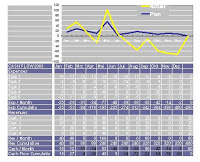- Initial investment
- Operating cash inflows, and
- Terminal cash inflow
Time Horizon for Analysis
- The physical life of the plant: This refers to the period during which the plant remains in a physically usable condition, i.e., the number of years the plant would perform the function for which it had been acquired. This depends on the wear and tear which the plant is subject to. Suppliers of the plant may provide information on the physical life under normal operation conditions. While the concept of physical life may be useful for determining the depreciation charge, it is not very useful for investment decision-making processes.
- Technological life of the plant: New technological developments tend to render existing plants obsolete. The technological life of a plant refers to the period of time for which the present plant would not be rendered obsolete by a new plant. It is very difficult to estimate the technological life because the pace of new developments is not governed by any law. While it is almost certain that a new development would occur when it would occur is anybody’s guess. Yet an estimate of the technological life has to be made.
- Product market life of the plant: A plant may be physically usable, its technology may not be obsolete, but the market for its products may disappear or shrink and hence its continuance may not be justified. The product market life of a plant refers to the period for which the product of the plant enjoys a reasonably satisfactory market.
- Investment planning horizon of the firm: The time period for which a firm wishes to look ahead for purposes of investment analysis may be referred to as its investment planning horizon. It naturally tends to vary with the complexity and size of the investment. For small investments (say, installation of a lathe) it may be five years, for medium size investments (say, expansion of plant capacity) it may be 10 years, and for large-size investments (say, setting up of a new division) it may be 15 years.
Also, Read:




